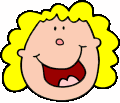
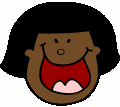

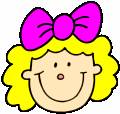

 |
Itís September again, and that means lots of new names to learn
if youíre a teacher, librarian, or care provider. Since I visit
the same school twice a week, it takes me a long time to learn
the names of the 150 children I see. I came up with this last
year, and itís become a favorite! Besides being a great way to
learn the names, it allows me to make eye contact with each
child, an invaluable way to connect as we start our short time
together. I also tried a new way of doing nametags that worked.
Instead of stickers (which only work a couple of times), or
necklace nametags, I simply folded 3X5 index cards in half
lengthwise, making a free-standing tent. I wrote each name in
large print with a marker and placed it on the floor in front of
each child. The first few times I had to have the kids raise
their hands as I called their names before placing the cards,
but that too became a way to connect. If children are older and
recognize their names, they can find and place them themselves.
You could also put a headshot photo on each to help children
find their own. This is a quick easy thing to do, and can easily
get you through those first weeks of school. But donít stop
singing the song! Itís a great transition song for circle time
all year long.
Knowing childrenís names is so important- for them, and for you.
So sing your way into knowing them, and have a great year!
Hello Song
(for Learning Names
Hello Jonathan, hello Hattie
Hello Jaxson, hello Ben, Hello
Hello Kate, hello Aiden
Hello Shea and Maya
Hello my friends, hello
Hello my friends, hello!
The beauty of this song is that it will grow or shrink to fit
any number of names. If you have more melody than names, you can
throw in another ďHello my friends, Hello.Ē If you have more
names, you can eliminate it, and so forth. This is also great
because the number of children on any one day will fluctuate.
Itís a very flexible song. We love flexibility!!
You can also clap the syllables of the names as you sing them.
Babies and very young children will be drawn to the rhythm, and
older children can join you, building phonemic awareness
|



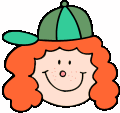
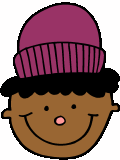
 |